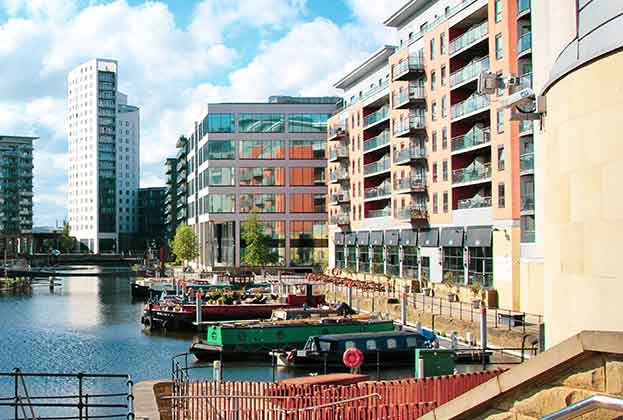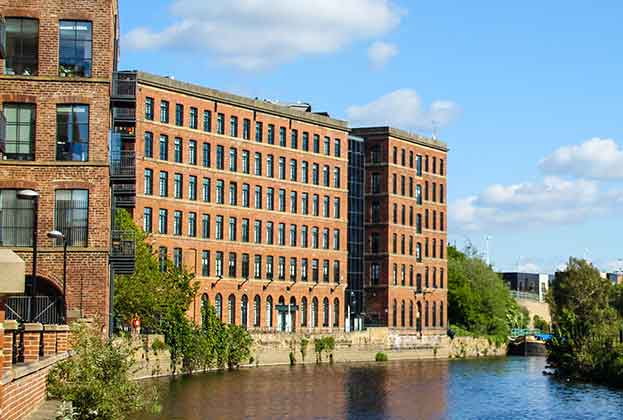How can Leeds maximise its economic potential?
‘Leeding’ the way
Leeds has strong growth ambitions to achieve large-scale transformation, anchored around the Leeds Innovation Arc
Leeds City Region is the undisputed leader within the Northern Powerhouse. With a local economy worth £69 billion, a workforce of 1.4 million people and over seven million people within an hour’s drive, it is the largest contributor to UK GDP in the Northern Powerhouse.
Looking to the future, plans to boost the city’s economic growth and productivity are centred around the Leeds’ Innovation Arc. The Arc, a series of innovation neighbourhoods formed around the natural anchors of the main universities, the proposed hospitals, and major private sector partners, is aiming to create an ecosystem that promotes collaboration and innovation. As a result, this should attract a high-value talent pool and create new opportunities for public and private sector investment into the city. However, in order to attract and retain skilled talent and productive employers, the local market must offer high-quality and affordable accommodation, well connected to the city.
Building on existing economic strengths
Forecast GVA growth for the city is set to outperform the regional and national averages over the next ten years. GVA in Leeds is expected to grow by 16% over the next ten years, which is in line with the average across the other UK “Big 6” cities (Birmingham, Bristol, Edinburgh, Glasgow, Leeds, Manchester).
Leeds has proven to be resilient in recent years, developing a more mixed economy with strength across a range of service and knowledge sectors. Information & communication, scientific & tech and insurance & financial sectors currently make up almost a third of GVA in 2023. However, innovation is at the heart of Leeds’ ambition for growth. The emerging Innovation Arc will create an opportunity for the city to improve on these forecasts.
Over the next ten years, information & communication is expected to experience the biggest growth, with GVA forecast to grow by 31%. However, significant growth (24% growth in GVA by 2032) is also forecast for the more traditional insurance and financial sectors.
A hub for digital health and life sciences
The healthcare sector, in particular, generates significant economic impact in the city. Employment in the human health and social care sector has grown by 16% in Leeds over the last five years compared to just 7% across the UK. Healthcare sector output is forecast to increase by £1.1bn (34.5%) between 2018 and 2028.
The presence of NHS Digital at Wellington Place is a major driver for future growth of the city, attracting over 60 start-ups who will co-locate around such a major organisation and venture capital funding, enabling these businesses to scale up within the city.
The city also has a thriving life sciences sector. The presence of leading pharmaceutical companies, research organisations, and innovative start-ups creates a dynamic ecosystem that drives job creation. The combination of strong medical research capabilities, a robust healthcare infrastructure, a thriving life sciences sector and a skilled workforce positions Leeds as an important economic powerhouse for healthcare.
.jpg)
Leeds Innovation Arc
The Leeds Innovation Arc, currently under consultation, will be a nationally important and internationally recognised knowledge engine, where academic research and entrepreneurial businesses come together to share knowledge and create new economic opportunities. By focusing on creating knowledge clusters and promoting collaboration, the initiative strengthens the city’s economy, enhancing its competitiveness.
The new hospitals will create the opportunity to redevelop the old hospital estate as an Innovation Village, a world-class hub for research, innovation and technology in life sciences, and bring about direct and wider economic benefits of up to £13bn in net present value terms and around 4,000 jobs
Victoria Critchley, Leeds Teaching Hospitals NHS Trust
The £450 million redevelopment of Leeds General Infirmary (LGI) is also a major investment into the city and expands Leeds NHS Trust’s world-class technology-driven services. The development will release approx. 12.5 acres of land to create the Innovation Village within the Arc. This strategic partnership between Leeds Teaching Hospitals NHS Trust, Leeds Beckett University, the University of Leeds, Leeds City Council and the private sector plans to drive regeneration for Leeds and the wider region.
Purpose-built accommodation
There is a strong existing provision of purpose-built accommodation and a significant future development pipeline concentrated in the city centre, serving the student and graduate population well. In recent years, the supply of student housing and Build to Rent has considerably increased. Build to Rent stock now makes up a key component of housing supply in Leeds, comprising 17% of total delivery in 2022. This growing sector is well placed to meet the increasing demand for high-quality city centre homes created by the Innovation Arc.
Creating the right space for start-ups
.jpg)
Leeds has been named the best UK city outside London to start a new business, according to a study based on government and business data. The launch of Nexus at the University of Leeds is driving collaboration and innovation across the city with its aim to create an outstanding place for entrepreneurs to start and grow a business in Leeds. Its community has more than doubled to 110 businesses in the last year and is already looking for future expansion. More recently, the Innovation Pop Up in the Gilbert Scott Building has been transforming ideas into successful start-ups. It is the first phase in establishing an Innovation Village and is a valuable test bed for new innovations and technologies, before they are implemented in the new hospitals.
For more information, please contact Simon Lister or Matthew Jones at our Leeds Office
Read the articles within Spotlight: Leeds – creating and delivering innovation below.


